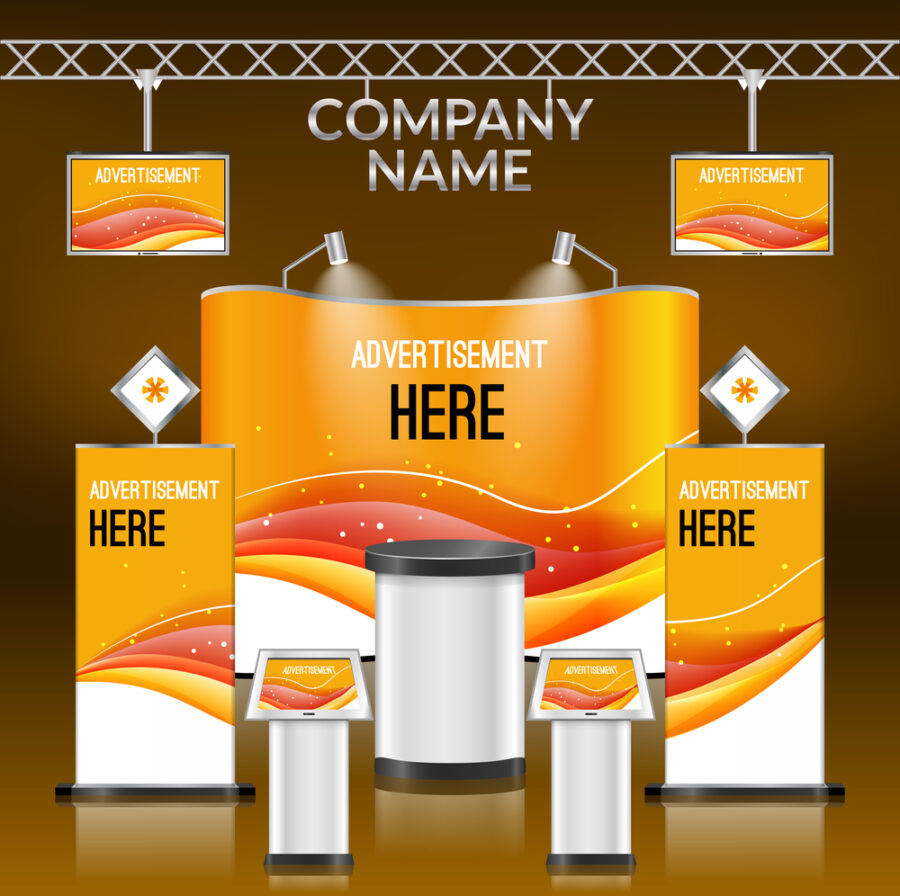Trade shows offer a wonderful opportunity to showcase your brand, network with industry peers, and gain valuable leads for business growth. If you plan on sponsoring a booth at a tradeshow, getting ready can be overwhelming. However, with the right guidance and planning, you can pull off the perfect trade show in 3 simple steps.
Step 1: Create Marketing Materials
Preparing for a trade show requires careful planning and strategic creation of marketing materials. We recommend that you begin this process two to three months in advance. This gives you time to focus on creating cost-effective, high-quality flyers and promotional materials.
You’ll want to share a clear and consistent message about your business across all your marketing materials. Many of these materials will be part of your display to attract attention to your booth, where you can provide engaging materials such as client testimonials and case studies.
Have a mix of detailed brochures for serious prospects and more general flyers for the wider audience. By ensuring everything aligns with your brand and including a call-to-action, such as setting appointments or newsletter signups, you can maximize your trade show impact.
Step 2: Prepare Displays
Reach out and contact your display vendors 6-8 weeks in advance to explore what display options are best for you and your budget. This first step is a great opportunity to get feedback on your display design. Budgeting is crucial and is in part dependent on how long you plan to use the display. It is also important to consider the logistics of getting the display items to the show and the ease of setting them up for display.
By carrying a clear and concise message from your marketing materials to your display items, with appealing graphics, your display will capture attention quickly. The goal of your display is to create interest within 3 seconds. Your company representatives can then engage and follow up with potential customers.
Step 3: Finalize Promotional Items
Last but not least, choosing the right promotional product for a trade show is essential for maximizing return on investment. By planning ahead, you can integrate the promotional item into your overall marketing strategy, from pre-show invitations to post-show follow-ups.
Focus on high-quality items that appeal to your target audience rather than generic giveaways. This will help build trust as your audience knows you understand their needs. Personalizing the promotional item to the audience’s preferences can enhance overall engagement and effectiveness.
Trade shows are a lot of work, but they can also be very rewarding both personally and financially for your business. By implementing the 3 steps above, you are well on your way to making your next trade show more impactful in terms of growing your audience, strengthening your brand, and creating relationships that impact your total sales and revenue. If you need help creating materials, preparing displays, or deciding what promotional item makes sense for your business, call the Edmiston Group at (724)612-0775. We would love to help!
About the author: Autumn Edmiston is the CEO and owner of the Edmiston Group. The Edmiston Group is a multifaceted Pittsburgh-based marketing consulting firm providing senior-level marketing management services to businesses and non-profit organizations on a short or long-term basis. Core areas of service are business development strategies, website creation and management, social media management, marketing, strategic planning, and public relations. The Edmiston Group has consistently delivered and implemented real-world, proven business marketing ideas and strategies for business.











